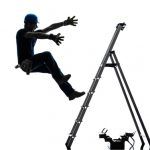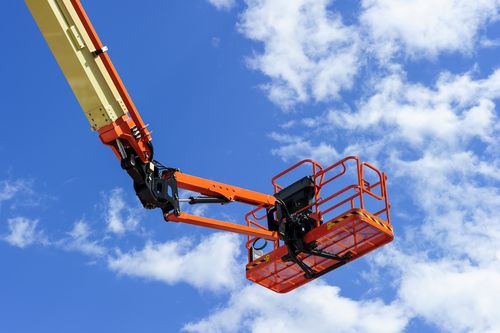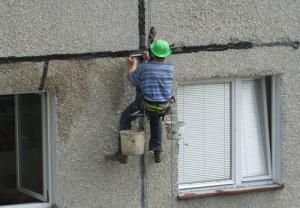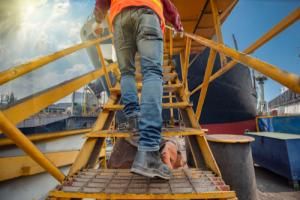
Safety Tips for Working on Roofs & Elevated Platforms

Worker safety is a top priority for any construction job site. When the job involves an elevated work site, safety planning for working at heights is of paramount importance. As with all project risks, job safety risks require analysis, planning and implementation of safety plans.
As with all project planning, tailoring for the specific job is also necessary. The complexity and height of the roof or elevated platform at the job site, the number of workers, tools and materials that may become obstacles, must all be factored in to the specific safety plan. This article provides some basic safety tips and considerations to apply to an overall safety plan for working at heights.
Safety First
 Your safety plan must be will integrated in to the build plan. What is the objective of the work? What is to be accomplished by being on the roof or platform? How are all safety risks to be mitigated? The first general safety tip is to study the elevated environment and plan accordingly.
Your safety plan must be will integrated in to the build plan. What is the objective of the work? What is to be accomplished by being on the roof or platform? How are all safety risks to be mitigated? The first general safety tip is to study the elevated environment and plan accordingly.
Perform a Site Assessment
To assess the risks and develop a safety plan the elevated site carefully review the potential hazards. Some typical considerations:
- Are there ladders needed?
- Are the ladders of the proper height and well secured?
- Are there open hatches or skylights, where workers can drop through?
- Is there the possibility of loose construction materials or debris that can cause a trip and fall?
- What problems can weather generate for footing?
- Are there rails or walls to prevent an accidental fall?
- Are these barriers of adequate height and strength?
Wind rain and extreme heat can create safety risks and protection from the elements needs careful attention.
Are there exposed electrical lines or the potential for electric hazard? The number one cause of construction site fatalities is workers falling from elevated heights; number two is electrocution. The site assessment is to review the site for possible risks and tailor the safety plan accordingly.
Tools, Training and Teamwork
 All employees should complete safety procedure training on an annual basis. Every employee that will work in the elevated job site, should be briefed on the job specific safety plan. The job specific plan has the details from the assessment and workers are made aware of risks and instructed on how to apply their general training to these specific risks. The site-specific plan should cover any safety tools to include: specialized ladders, harness, lanyards, other job site specific safety equipment. Tools include the right clothing for the weather conditions, sunglasses, headgear, and gloves.
All employees should complete safety procedure training on an annual basis. Every employee that will work in the elevated job site, should be briefed on the job specific safety plan. The job specific plan has the details from the assessment and workers are made aware of risks and instructed on how to apply their general training to these specific risks. The site-specific plan should cover any safety tools to include: specialized ladders, harness, lanyards, other job site specific safety equipment. Tools include the right clothing for the weather conditions, sunglasses, headgear, and gloves.
Teamwork or the “buddy system” is a basic safety idea that certainly applies to the elevated construction site. This can involve just simple concepts as holding ladder for a team mate, or “spotting” for a specific task to ensure safety procedures are followed. Teamwork, training and the right tools are the foundation of a proper safety plan.
Worker safety is the number one priority for any construction job and when the job involves an elevated work site, risk planning and implementation is essential for worker safety and protection.
Contact us today to find out how Advanced Consulting & Training can help you formulate and execute an effective safety plan for working at heights. We also offer hands-on safety training for working at heights.


